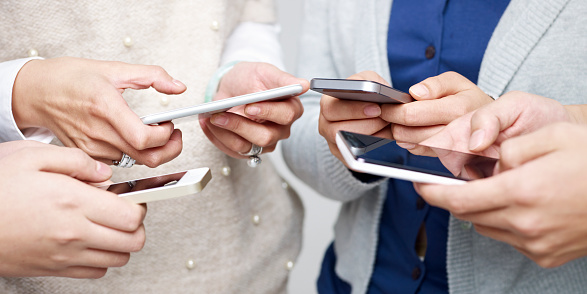
Texting has become one of the most popular forms of communication, and some statistics gathered by Teckst, a software technology company in New York, show just how staggering the usage is:
Over 6 billion text messages are sent each day in the US
The average adult spends a total of 23 hours a week texting
Americans sent 69,000 texts every second in 2012
So, is all this texting activity causing damage to our hands or joints? According to John Fatti, MD, president of SOS, “People that use their hands in a repetitive, quick way are using the tendons in their hands much more rapidly and much more in an overuse-type situation.”
When people text, their hands, arms and elbows get a workout without even realizing it. These repetitive keystrokes and mouse clicks may pose a risk for injury or aggravate existing conditions. Heavy users of smartphones may find their thumbs aching, and the term “texting thumb” is being used more frequently in medical circles.
Texting thumb is actually trigger thumb, or trigger finger, which is a condition affecting the tendons. Symptoms of trigger finger usually start without any injury, although they may follow a period of heavy hand use. Symptoms may include:
- A tender lump in your palm
- Swelling
- Catching or popping sensation in your finger or thumb joints
- Pain when bending or straightening your finger
If symptoms are mild, resting the finger may be enough to resolve the problem. Your doctor may recommend a splint to keep your finger in a neutral, resting position. Over-the-counter pain medications, such as non-steroidal anti-inflammatory medicines (NSAIDS) or acetaminophen can be used to relieve the pain. In rare cases, surgery might be indicated, but that would be an individual decision between a patient and doctor.
Dr. Fatti also cautions about the risk of carpal tunnel syndrome due to heavy keyboard and smartphone usage, saying, “What really affects the odds of getting carpal tunnel syndrome is how long your hands are performing the same repetitive motion.” Carpal tunnel syndrome causes increasing numbness in the thumb, index and middle fingers. Symptoms include numbness, tingling and pain in the hand; and strange sensations and pain traveling up the arm toward the shoulder. These feelings could lead a person to drop things.
Carpal tunnel syndrome can first be treated using conservative methods. “There are some pretty good anti-inflammatory medicines you can take by mouth. Physical therapy, electrical stimulation and ultrasound treatment is successful in some patients,” states Dr. Fatti. If these kinds of treatments don’t work, and surgery is required, Dr. Fatti says a new operation called an “endoscopic carpal tunnel release” is minimally invasive. It involves an incision in the wrist that’s less than a quarter of an inch, and uses a scope to perform the surgery. This operation has a quick recovery time, and a recurrence rate of less than one percent, meaning it’s considered a “one time fix.”
To help prevent texting thumb and carpal tunnel syndrome, Dr. Fatti recommends taking a break, particularly from long keyboard usage. “Nobody’s tendons are meant to work for more than an hour or an hour-and-a-half in a row. So, take a rest break from your computer for a few minutes to give your tendons a break,” says Dr. Fatti. “And, why not try picking up the phone or talking to a friend face-to-face to cut down on texting? You might build a better personal connect and avoid texting thumb.”
The physicians and staff at SOS are available to treat conditions such as texting thumb and carpal tunnel syndrome, and encourage patients to learn about their options.
